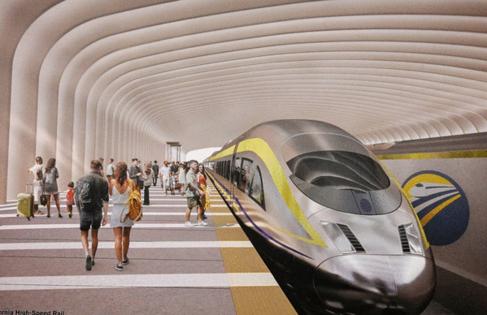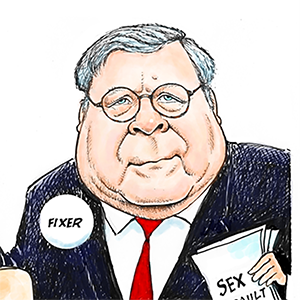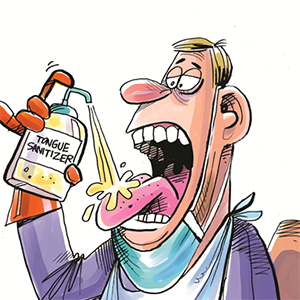California high-speed rail has a plan to build to Gilroy, Palmdale simultaneously with Central Valley segment
Published in News & Features
As costs ballooned and political backlash mounted, the California High-Speed Rail Authority pivoted years ago to building its 400-mile bullet train between San Francisco and Los Angeles in segments — starting with a 171-mile stretch connecting the agricultural cities of Merced and Bakersfield.
Connections to the major population centers in the Bay Area and Southern California, while still part of the plan, weren’t expected for decades.
But in an interview with the Bay Area News Group this week, the CEO of the California High-Speed Rail Authority, Ian Choudri, said he is pushing to build the railroad north to Gilroy and south to Palmdale simultaneously with construction in the Central Valley.
That plan, though, hinges on a major factor — California lawmakers’ approval for over $1 billion each year to fund it.
“From day one when I came on board, my goal has been to connect to the population centers as fast as we can,” Choudri said.
The vision: Even if the first phase of high speed rail doesn’t extend all the way to San Francisco and Los Angeles, it will at least end at stations with transit connections to those cities’ downtowns.
The plan — one of several options for a buildout that the rail authority will present to lawmakers in the coming weeks — would represent the most ambitious pivot for the California High-Speed Rail Authority since Gov. Gavin Newsom announced in 2019 that the state would focus on completing the Central Valley segment. That piece is expected to be delivered in 2033.
Since Choudri came on as head of the project almost a year ago, he has been pushing to finish the project in partnership with private investment. But the private industry needs the guarantee of long-term government funding if it’s to put up its own money, too, he said.
So far, that hasn’t materialized. Beyond the initial $9 billion bond that voters approved for the project in 2008, funding has come in fits and spurts. Earlier this month, the Trump administration announced it would pull $4 billion in federal grants slated for the project, citing cost overruns and limited progress. Newsom was quick to respond with a lawsuit, arguing the decision was motivated by President Donald Trump’s “personal animus” toward the project.
Choudri, for his part, has quickly accepted that the federal government can’t be counted on. Litigation around the federal funding could take years to resolve. The constant uncertainty over funding is a major reason for the procurement delays, stop-and-start construction and issues with contractors that have led costs to skyrocket to over $100 billion for the complete L.A. to San Francisco route, three times its initial cost estimate.
With the federal government bailing, Choudri is appealing to the state to increase funding that high-speed rail currently gets from the cap-and-trade program, in which polluting companies bid for credits that allow them to emit greenhouse gases.
Other Democrats are concerned the state has already invested billions with little to show for it and are wary of funneling more money into the project. Rebecca Bauer-Kahan, a state Assembly member who represents the East Bay, said at a budget hearing in April that her constituents “overwhelmingly believe” high-speed rail spending “has been irresponsible.”
Currently, the rail authority receives a 25% cut of the cap-and-trade annual revenues, an amount that fluctuates from year to year. In 2024, high-speed rail received $1 billion from the program, but that was a good year. (Since the cap-and-trade program’s inception in 2013, it has appropriated $7 billion to high-speed rail.)
California’s cap-and-trade is only authorized through 2030 though, and lawmakers, the governor, environmental groups and pollution-generating companies are in the midst of negotiations over whether to reauthorize the program, and how to divvy up its revenues.
Newsom has proposed extending the program through 2045, with $1 billion of the program’s funding going to the High-Speed Rail Authority each year. (This upcoming fiscal year, it’s projected to generate $4.8 billion.)
That’s expected to be enough to finish the Central Valley segment, from Bakersfield to Merced— but not to extend the line all the way to Gilroy and Palmdale. Choudri declined to provide an exact dollar figure, but said that the rail authority is set to release those figures in official proposals that will be published in the next few weeks.
“What I’m asking for is longer-term funding — and a little bigger number of dollars — to build all of it simultaneously,” Choudri said.
He’s got an uphill legislative battle ahead of him. More money for high-speed rail means less money for other programs that use cap-and-trade funds — like clean air initiatives and habitat restoration projects.
A few lawmakers and the governor seem to be coalescing around the $1 billion figure.
“Real tracks are being laid ... so I want to get it done,” Newsom said at his budget briefing in May.
Sen. Dave Cortese, a Santa Clara County Democrat who represents the South Bay and heads the Senate Transportation Committee, also backs the $1 billion.
“Choudri is eager to get into Gilroy and down to Palmdale because the ridership revenue really takes off at that point,” Cortese said in a text message on Wednesday.
From Gilroy, a rider can get to San Francisco via Caltrain in about two hours, with a stopover in San Jose. From Palmdale, a rider can reach L.A.’s Union Station in two hours on Metrolink, or transfer to the private Brightline railroad currently under construction between Rancho Cucamonga and Las Vegas.
With so many stopovers, the Gilroy to Palmdale train isn’t likely to become a replacement for air travel between San Francisco and Los Angeles. But it could still be useful to commuters. In Merced, San Joaquin and Stanislaus counties, nearly one in 10 people have commutes of more than 90 minutes, according to a 2022 University of California, Davis study.
Higher ridership figures would also help bring in private investment that Choudri says is needed to finish the project. During a panel discussion with Choudri at the American Public Transportation Association conference last month in San Francisco, executives from across the private sector endorsed the route extension.
“If you can get the system ... to Gilroy or down to Palmdale, then you can really unlock what people are willing to pay for the service,” said David Blaisdell, an executive with global infrastructure developer Bechtel Enterprises.
_____
©2025 MediaNews Group, Inc. Visit at mercurynews.com. Distributed by Tribune Content Agency, LLC.







Comments